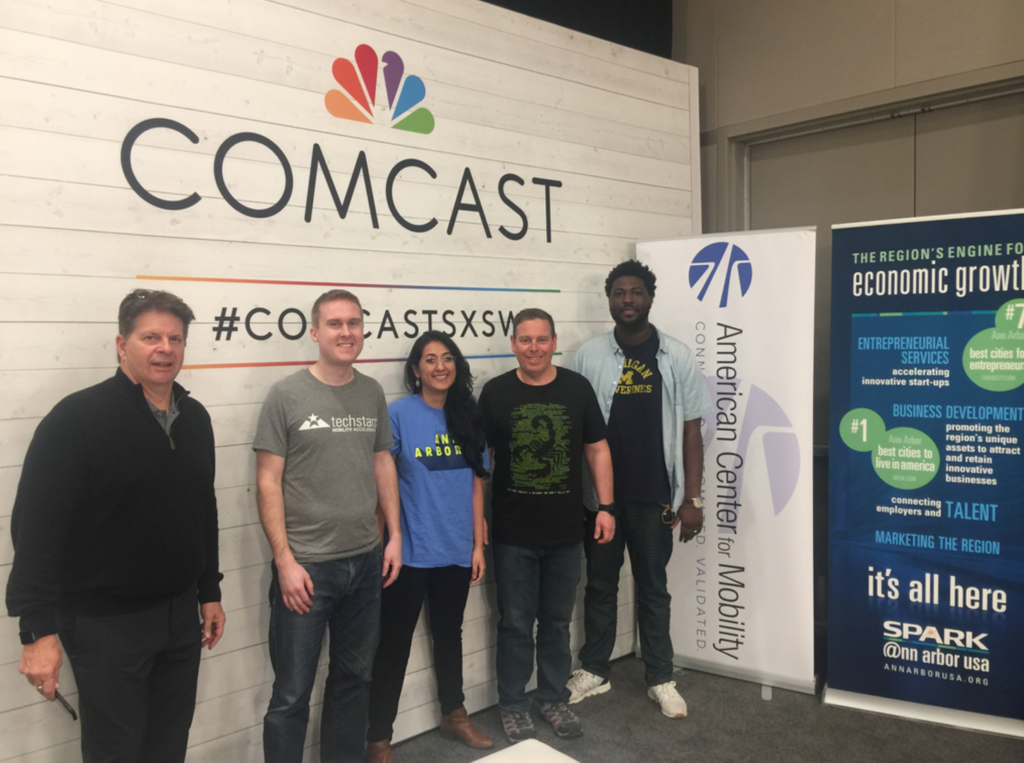
This was my first time at SXSW. Needless to say, I was overwhelmed by the event, wishing more than once that I could clone myself to immerse myself in more sessions and experiences. I am passionate about mobility and cities and how we create equitable and accessible environments for all members of our society. That lens is reflected in the discussions I attended and the observations I share. But before I share these, on behalf of Ann Arbor SPARK I want to give a shout out to the organizers of Michigan House for being amazing partners and hosts for our events.
- Local action in absence of federal support: Mayors are taking the reins of their city’s growth into their hands. The federal stance clashes with what they and their constituents believe as priorities for their sustainable growth. Be it the issues of environment, automated vehicles, immigration, etc.; the Mayors are embracing their priorities and coming up with innovative funding mechanisms to deliver on their visions. They are taking it a notch further by creating frameworks that other cities can adopt to create consistent policy across the nation.
- A New Lens on Public Private Innovation: Pittsburgh had chosen to lay out the red carpet as opposed to the red tape for Uber’s driverless program. That relationship has had its ups and downs. Cities are struggling with how to create the right environment for innovation and transparency. It was interesting to hear the dialogue around alignment of principles and goals between public and private sector making them partners in the cities growth and not such service delivery agents. Even in the conversation around the race for the next Amazon Headquarters, the Mayor of Austin (Steve Adler) and Mayor of New York (Bill de Blasio) discussed their strategy to move away from incentives and instead invite Amazon to be innovation partners in their city so that they can create vibrant communities together.
- Large corporations engaging with startups to create frameworks for partnership and innovation: Gone are the days of acquiring startups and then reorganizing them to integrate them within the parent company’s culture and operational style. Corporations now realize the value of letting the startups keep their construct, culture, and individuality. One such example was Unilever Foundry which was created to be a platform for start-ups and innovators to engage, collaborate, and explore business ideas with Unilever and their 400+ brands. By first identifying the needs and then finding technologies that can solve those problems, both cities and corporations seem to have found a formula that could create a more lasting partnership with the startups that could benefit everyone.
- Creating inclusive environments and providing access for all.This has been the trend of the year and it reflected in the conversations on the panels. How do we create opportunities for underrepresented groups like women, people of color, LGBT, minorities to have leadership roles and influence the growth of our companies and cities? How do we create environments that meet everyone’s needs? It is the responsibility of each one of use to question the absence of these groups at the table and demand their representation across the board. Another important point was on opportunity for growth for all individuals in our changing times. As we move to an era of Autonomy and Connected vehicles, we must ensure that we don’t repeat the mistakes of industrial revolution leaving many people unemployed and in poverty. I agree strongly with Mayor Sadiq Khan’s views on training our current workforce with the skillsets that they need for the jobs of the future.
- System Thinking and Wider Stakeholder Participation: Over the years there has been a shift in the way we address the Mobility evolution. It began with applauding the advancement in technology, to discussing the value for the customer, then to the enriched customer experience and now finally the discussion has evolved to creating stronger mobility systems by embracing a diverse stakeholder participation. May Mobility and Lyft both spoke on different panels about the value they bring to the system and how they are engaging a range of stakeholders to better serve the needs of everyone in society.
Subscribe to our newsletters
Don’t miss an event, announcement, or job opportunity. Get news delivered to your inbox and stay informed about what is going on in tech, business, and talent in the greater Ann Arbor region.
Subscribe to our newsletters
Don’t miss an event, announcement, or job opportunity. Get news delivered to your inbox and stay informed about what is going on in tech, business, and talent in the greater Ann Arbor region.